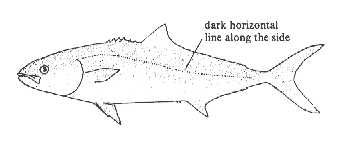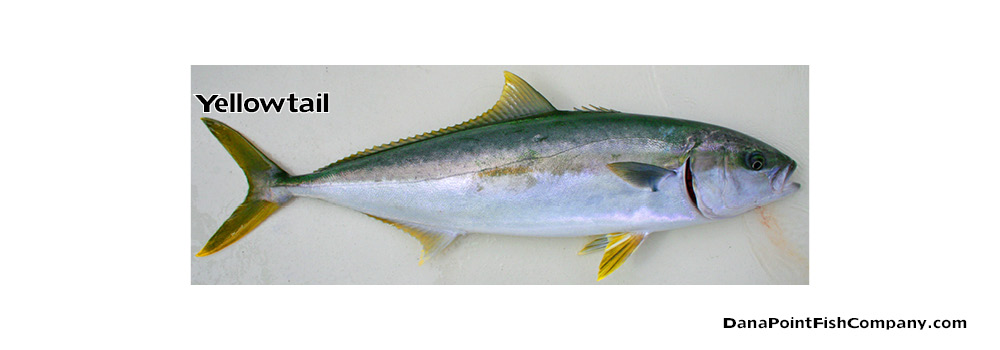Yellowtail – Seriola lalandi dorsalis, from the Carangidae (Jacks) family.

Identifying Characteristics and Biology
- Elongated body, with a tapered mouth, conical head, and deeply forked tail.
- Silver belly, with olive to navy on top. There is a dark bronze streak forming a horizontal line that runs along their sides.
- The yellowtail fins are yellowish in color.
- These fish are sexually mature at 2 years of age, and all yellowtail spawn at 3 years.
Range and Habitat
- The California yellowtail are found from Chile to British Columbia.
- They are found at depths from the surface down to 228 feet.
- Opportunistic feeders, they look for anything such as palegic crabs, anchovies, squid, and other smaller fish.
Market Forms
- Highly prized sportfishing species.
Yellowtail Similar Species
The California yellowtail is similar to these species of fish, all in the Jack family: amberjack, buri (Japanese amberjack), almaco jack, samson fish, and the southern yellowtail. According to the IGFA, there is one worldwide yellowtail complex with three recognized subspecies:
It is currently believed that the worldwide yellowtail complex is one species, Seriola lalandi. However, three subspecies are recognized, primarily because of their disjunct distribution and the fact that they do not interact. The subspecies are California yellowtail (Seriola lalandi dorsalis), Asian yellowtail (Seriola lalandi aureovittata), and southern yellowtail (Seriola lalandi lalandi).
Sources:
“California Marine Sportfish Identification: Other Fishes.”California Department of Fish and Wildlife. CA DFG, n.d. Web. 08 May 2017.
Love, Robin Milton. “Jacks, Amberjacks, Pompanos – Family Carangidae.” Probably More than You Want to Know about the Fishes of the Pacific Coast. Santa Barbara, CA: Really Big, 1996.
“Yellowtail, Southern.” IGFA. International Game Fish Association, n.d. Web. 08 May 2017.

